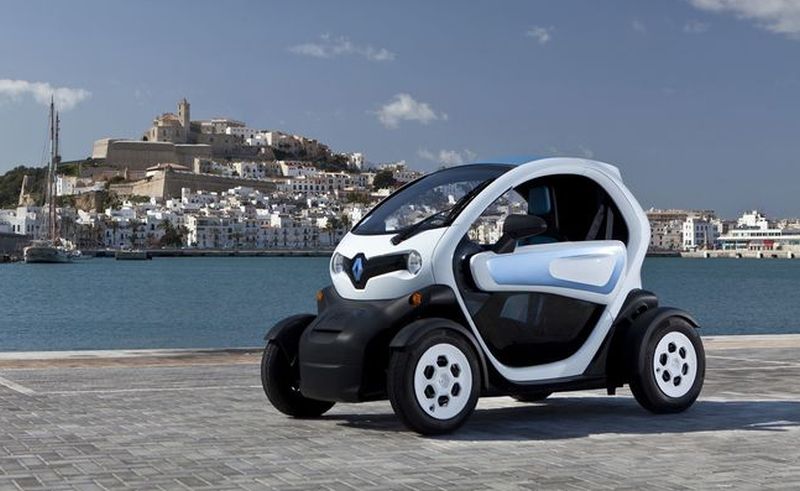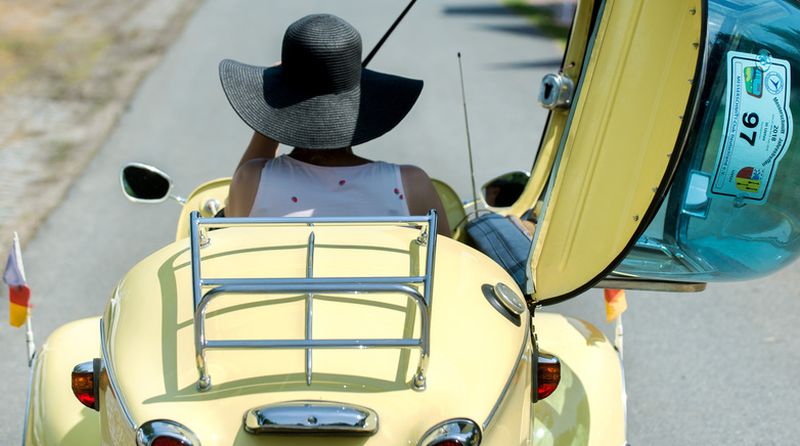BERLIN: Opel's Rocks-e is a departure from the carmaker's usual passenger cars. It's a boxy, compact two-seater that is fully electric - officially classified as a light motor vehicle.
It's a particularly promising area for the carmaker as it seeks to embrace a whole new target group.
The vehicle is basically 2.41-metre cube on wheels, on sale for €7,990 (RM37,000), making it less expensive than almost all the conventional small cars out there.
That makes the Rocks-e one of the cheapest electric vehicles around, and it doesn't cost more to lease than a monthly pass for the city bus according to the marketing.
Plus, drivers are also able to get behind the wheel from age 15, and don't need a driving licence in many places, just an AM licence, the category that applies to mopeds rather than motorbikes, permitting holders to drive two-wheeled or three-wheeled vehicles.
Depending on the model, a moped driving licence is also sufficient.
You pay a flat rate for the insurance in some places and it doesn't cost much, according to Thomas Schuster, a German test engineer. Plus, depending on where you are, you won't have to pay vehicle tax either.

Laws in many European countries define these kind of vehicles as having four wheels, one or two seats, with 4kW of power, weighing no more than 425kg and designed for a maximum speed of 45kph.
Fewer crash tests are required, and there are no legal stipulations on standard safety equipment, compared to passenger cars which are required to have airbags, ABS and ESP these days. These vehicles also aren't required to undergo regular main inspections.
However, seat belts and a driver's airbag are required.
These are not a brand new class of cars, and the BMW Isetta and Messerschmitt cab scooters were both popular back in the 1950s.
The Class S driving licence came in in 2004 for these kinds of vehicles in 2004, allowing teens as young as 15 in some countries to switch to four wheels at an early age for the first time.
But now these vehicles are back in the spotlight, with a wide range of brands particularly from Italy to France, where they are far more common.
Vehicle manufacturers such as Ligier, Aixam, Casalini and Piaggio offer a wide range of models for between €10,000 and €20,000, with the spectrum reaching from cool convertibles to handy small trucks.
There is also variety when it comes to the drive system, and buyers are able to pick from classic internal combustion engines, hybrids and pure electric vehicles.

Electrification in particular is likely to give this class a boost, says Schuster, with an eye on the Rocks-e. "You don't need big, expensive batteries and nobody expects huge ranges," he says.
Unsurprisingly, given Renault released the Twizy for this vehicle category, the Rocks-e was actually developed as a Citroën Ami. You can find hundreds of them at charging stations in France.
You'll also spot others like Microlino with the electric Isetta or ACM with the City One as similar side entrants to this niche.
In the course of their development, some have become bigger, stronger and faster, and like the Microlino with airbags and a top speed of 90 km/h, are coming to resemble "real" cars more closely.
But people might want a smaller vehicle, especially in the city. "Regardless of whether it has an electric motor or a combustion engine, it's crazy how much mass and surface area we use just to get one person from A to B," says Microlino boss Wim Ouboter, fighting the good fight for light vehicles.
Meanwhile Opel spokesperson Harald Hamprecht says parents can relax a good deal more if their youngsters head home from a nightclub in a vehicle like this, rather than a moped or late night bus.
These little vehicles might solve a bunch of problems, but of course there are some new ones, too, if you ask experts at the German automobile club. They are not fans of this type of vehicle, saying without official crash regulations, tests about impact protection have delivered very sobering results.
When it comes to driving, many of these models are not particularly stable and younger drivers typically lack experience, also as they often get their driving licence on two wheels then switch to four.

The problem, however, is not just the technology and the driver's potential lack of practice, says Schuster. Other road users also have to adapt the way they see these vehicles. "Unlike a moped, you can easily mistake a light vehicle for a conventional small car, and misjudge the speed or acceleration and possibly cause a dangerous accident," he says.
So if you are thinking of buying one of these vehicles, be clear in your mind about how you might drive it before you buy one, is the advice from the experts.
"It makes sense to limit this to the city. Longer cross-country journeys in light vehicles are a no-go and night journeys and trips outside built-up areas are not recommended," says the German group, whose experts find little more positive to say about this class of vehicle other than that you have a roof over your head.
Furthermore, market observers say these smaller cars have an acceptance problem after the initial wave of enthusiasm.
"Who would pay four- or even five-figure sums for a vehicle that becomes completely uninteresting by the time the driver reaches their 18th birthday at the latest and can then get a 'real' car without a speed limit," one dealer says.
Opel, at least, has considered this factor and offers the Rocks-e primarily as a leasing model.












